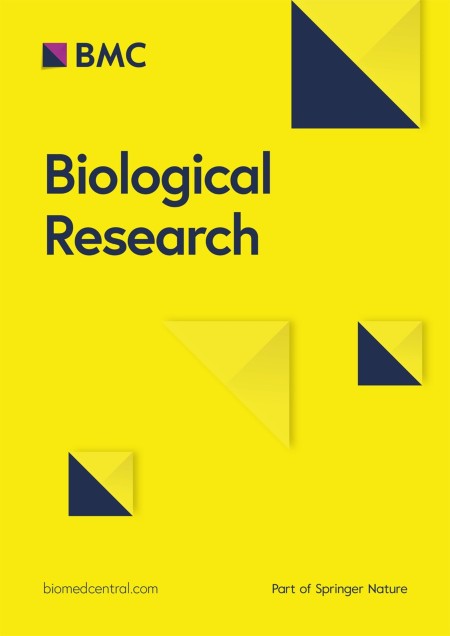整合 ATAC-seq 和 RNA-seq 发现 MX1 介导的 AP-1 转录调控是唐氏综合征的治疗靶标
IF 4.3
2区 生物学
Q1 BIOLOGY
引用次数: 0
摘要
越来越多的证据表明,I型干扰素(I-IFN)在唐氏综合症(DS)的发病机制中发挥着潜在的作用。这项研究探讨了 I-IFN 的效应基因 MX1 在 DS 相关转录调控和表型调节中的潜在功能。我们利用高通量测序(ATAC-seq)对转座酶可及染色质进行了检测,以探索DS衍生羊膜细胞(DSACs)与对照组之间染色质可及性的差异。然后,我们将ATAC-seq结果中注释的差异表达基因(DEGs)和靶向启动子区域的富集转录因子(TFs)与RNA-seq中的差异表达基因(DEGs)结合起来,以确定参与DS生物学过程和通路改变的关键基因和通路。结合基序分析表明,DSACs中与神经细胞功能等相关基因的染色质可及性显著增加,而神经细胞功能主要受激活蛋白-1(AP-1)转录因子家族成员的调控。进一步的研究表明,被定义为 I-IFN 关键效应基因之一的 MX Dynamin Like GTPase 1(MX1)是一个关键的上游调控因子。它的过度表达会诱导 AP-1 TFs 的表达并介导炎症反应,从而导致 DS 细胞活力下降。此外,使用特异性 AP-1 抑制剂 T-5224 治疗可改善 DSAC 中与 DS 相关的表型。这项研究表明,MX1 介导的 AP-1 激活是 DS 细胞功能障碍的部分原因。T-5224能有效改善DSACs中与DS相关的表型,这表明它是治疗DS患者的一种潜在选择。本文章由计算机程序翻译,如有差异,请以英文原文为准。
Integration of ATAC-seq and RNA-seq identifies MX1-mediated AP-1 transcriptional regulation as a therapeutic target for Down syndrome
Growing evidence has suggested that Type I Interferon (I-IFN) plays a potential role in the pathogenesis of Down Syndrome (DS). This work investigates the underlying function of MX1, an effector gene of I-IFN, in DS-associated transcriptional regulation and phenotypic modulation. We performed assay for transposase-accessible chromatin with high-throughout sequencing (ATAC-seq) to explore the difference of chromatin accessibility between DS derived amniocytes (DSACs) and controls. We then combined the annotated differentially expressed genes (DEGs) and enriched transcriptional factors (TFs) targeting the promoter region from ATAC-seq results with the DEGs in RNA-seq, to identify key genes and pathways involved in alterations of biological processes and pathways in DS. Binding motif analysis showed a significant increase in chromatin accessibility of genes related to neural cell function, among others, in DSACs, which is primarily regulated by members of the activator protein-1 (AP-1) transcriptional factor family. Further studies indicated that MX Dynamin Like GTPase 1 (MX1), defined as one of the key effector genes of I-IFN, is a critical upstream regulator. Its overexpression induced expression of AP-1 TFs and mediated inflammatory response, thus leading to decreased cellular viability of DS cells. Moreover, treatment with specific AP-1 inhibitor T-5224 improved DS-associated phenotypes in DSACs. This study demonstrates that MX1-mediated AP-1 activation is partially responsible for cellular dysfunction of DS. T-5224 effectively ameliorated DS-associated phenotypes in DSACs, suggesting it as a potential treatment option for DS patients.
求助全文
通过发布文献求助,成功后即可免费获取论文全文。
去求助
来源期刊

Biological Research
生物-生物学
CiteScore
10.10
自引率
0.00%
发文量
33
审稿时长
>12 weeks
期刊介绍:
Biological Research is an open access, peer-reviewed journal that encompasses diverse fields of experimental biology, such as biochemistry, bioinformatics, biotechnology, cell biology, cancer, chemical biology, developmental biology, evolutionary biology, genetics, genomics, immunology, marine biology, microbiology, molecular biology, neuroscience, plant biology, physiology, stem cell research, structural biology and systems biology.
 求助内容:
求助内容: 应助结果提醒方式:
应助结果提醒方式:


